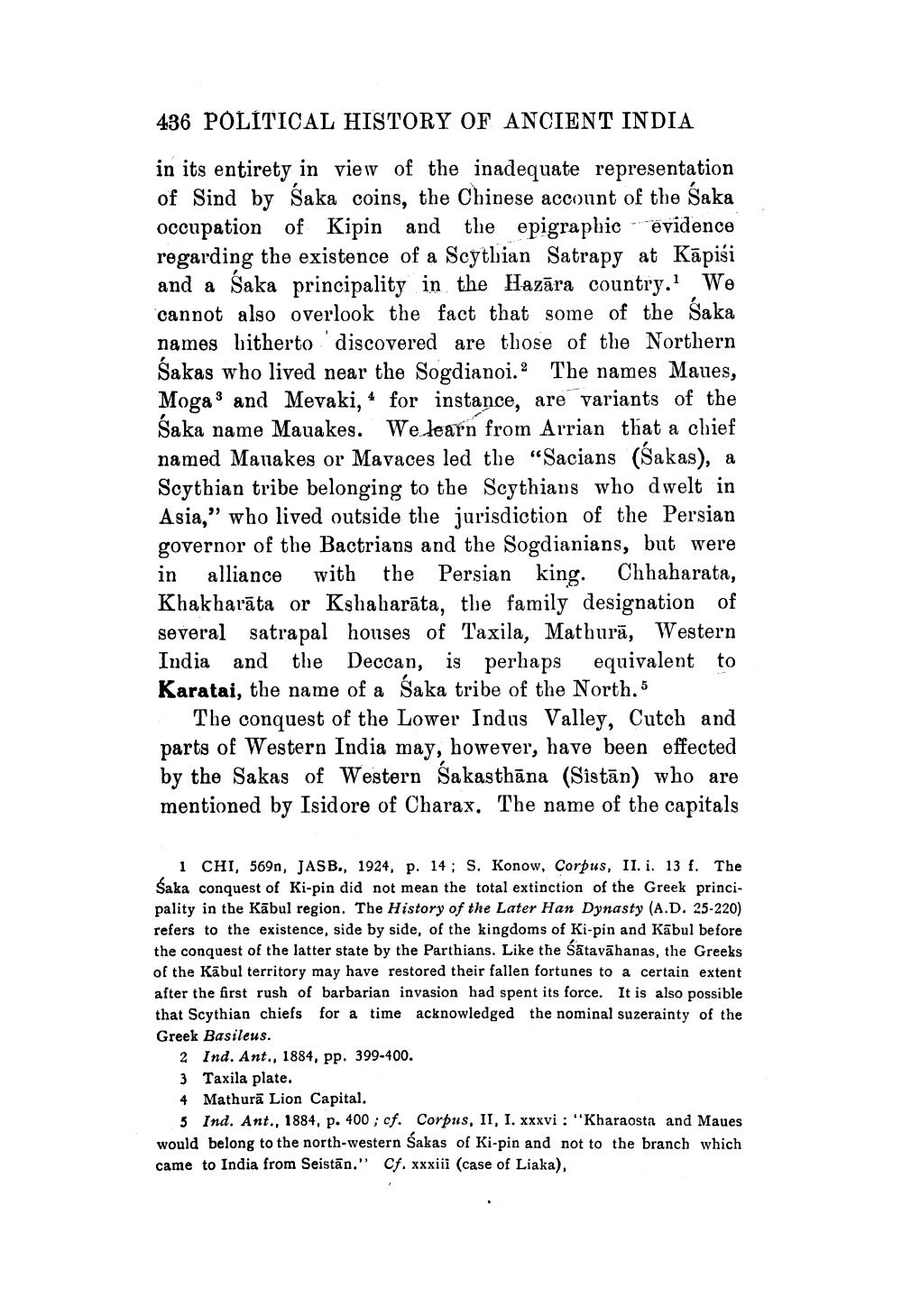________________
436 POLÍTICAL HISTORY OF ANCIENT INDIA
in its entirety in view of the inadequate representation of Sind by Śaka coins, the Chinese account of the Saka occupation of Kipin and the epigraphic evidence regarding the existence of a Scythian Satrapy at Kāpiši and a Saka principality in the Hazāra country. We cannot also overlook the fact that some of the Saka names bitherto discovered are those of the Northern Śakas who lived near the Sogdianoi.2 The names Maues, Moga and Mevaki, * for instance, are variants of the Śaka name Mauakes. We learn from Arrian that a chief named Mauakes or Mavaces led the "Sacians (Sakas), a Scythian tribe belonging to the Scythians who dwelt in Asia," who lived outside the jurisdiction of the Persian governor of the Bactrians and the Sogdianians, but were in alliance with the Persian king. Chhaharata, Khakharāta or Kshaharāta, the family designation of several satrapal houses of Taxila, Mathurā, Western India and the Deccan, is perhaps equivalent to Karatai, the name of a Saka tribe of the North.5
The conquest of the Lower Indus Valley, Cutch and parts of Western India may, however, have been effected by the Sakas of Western Sakasthāna (Sistān) who are mentioned by Isidore of Charax. The name of the capitals
1 CHI, 569n, JASB., 1924, p. 14 ; S. Konow, Corpus, II. i. 13 f. The Saka conquest of Ki-pin did not mean the total extinction of the Greek principality in the Kābul region. The History of the Later Han Dynasty (A.D. 25-220) refers to the existence, side by side, of the kingdoms of Ki-pin and Kābul before the conquest of the latter state by the Parthians. Like the Satavāhanas, the Greeks of the Kabul territory may have restored their fallen fortunes to a certain extent after the first rush of barbarian invasion had spent its force. It is also possible that Scythian chiefs for a time acknowledged the nominal suzerainty of the Greek Basileus.
2 Ind. Ant., 1884, pp. 399-400. 3 Taxila plate. 4 Mathurā Lion Capital.
5 Ind. Ant., 1884, p. 400; cf. Corpus, II, I. xxxvi : "Kharaosta and Maues would belong to the north-western Sakas of Ki-pin and not to the branch which came to India from Seistān." Cf. xxxiii (case of Liaka),




